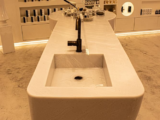
Tools A Joinery Specialist Should Have For Efficient Work
April 23, 2025Joinery involves precise cutting, shaping, and fitting of wood to create furniture, fittings, and structural components. To complete tasks smoothly and accurately, a joinery specialist uses a mix of hand tools and machinery. The choice of tools depends on the project, but several are used frequently in workshops and on-site jobs for better quality and faster progress.
Measuring and marking tools:
Accurate measurements are the foundation of joinery work. Tools like tape measures, steel rules, try squares, and marking gauges are used to ensure straight lines and correct dimensions. A marking knife is often preferred over a pencil for cleaner lines. These tools assist a joinery specialist Dubai in reducing errors before any cutting begins.
Cutting tools:
A joinery specialist uses various saws depending on the task. Handsaws, such as tenon saws and dovetail saws, allow for fine cuts, while panel saws are used for larger pieces. For heavier jobs, powered options like circular saws or mitre saws provide quicker and smoother cuts with less physical effort.
Shaping and smoothing tools:
Once wood is cut, shaping and smoothing improve the fit and finish. Chisels are used for carving joints and refining edges. Planes such as block planes and jack planes—flatten and smooth surfaces. Files and rasps are used for detailed shaping. These tools support clean connections between pieces and a polished look.
Drilling and boring tools:
Drills are used to create holes for dowels, screws, and fittings. Cordless drills are common on job sites, while drill presses are used in workshops for more precise drilling. Auger bits, spade bits, and Forstner bits are selected based on hole size and wood type.
Clamping and holding tools:
Clamps hold pieces steady during cutting, gluing, or assembly. G-clamps, sash clamps, and quick-release clamps are often used to secure wood. Bench vices offer strong support for shaping or chiseling. A steady work surface improves accuracy and keeps hands safer.
Finishing tools:
After assembly, finishing tools prepare the surface for painting or sealing. Sandpaper, sanding blocks, and electric sanders remove rough edges and marks. Brushes or cloths are used to apply oils, stains, or varnish. These tools improve the appearance and texture of the final product.


